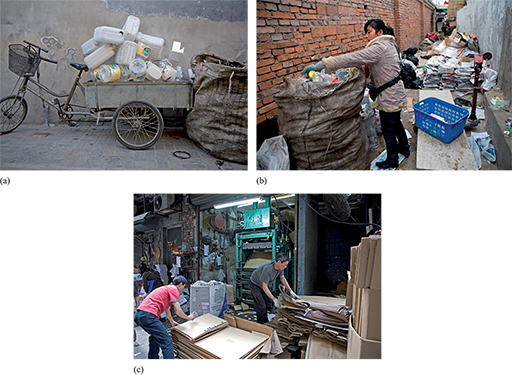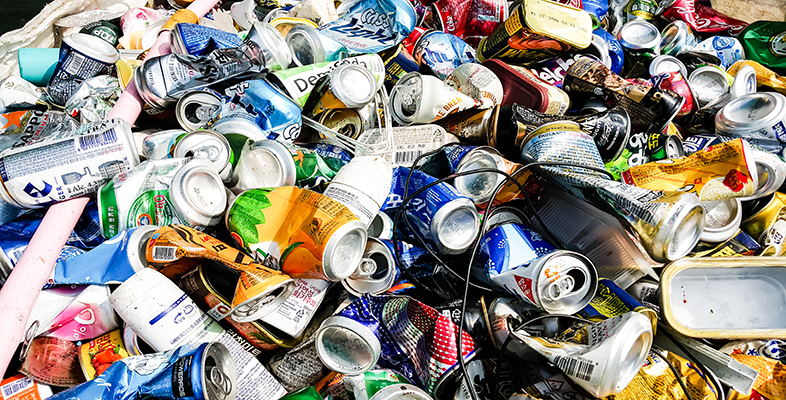Informal waste collection
Although uncontrolled dumping in China is common, it is not the only means of managing waste. The removal of hutongs has resulted in large amounts of building rubble, much of which is sorted by people who work the streets for very low earnings. These people also travel around the city all day long collecting any type of waste that has a resale value. Items which can be resold include cardboard, foam, electronic goods, paper and other metal goods such as scrap metals or wires. These collectors then take these items to larger depots and sell them on to larger merchants, who then use the items to become inputs for future products or processes. This is an example of what you may recognise as recycling. Items such as wood, tiles, crockery, stone or bricks from torn down houses or abandoned sites attract less value, hence those people that collect these may be making just enough to survive.
All of the street-based recyclers are part of an informal system that has developed in response to a demand and a need for people to earn a living. Such systems are not heavily regulated and operate outside the normal and more formal market. Even though they may seem unorganised, these informal workers (shown in Figure 6) make a significant contribution to waste clearance, and those who have chosen to work in the cities after a rural migration may feel that they have a better life overall. A quote from Judy Li from Beijing’s China Sustainable Cities Program shows the scale of these informal enterprises: ‘Local waste experts and activists say that in Beijing alone there are around 200 000 informal collectors working seven days a week, collecting around 30% by weight of the total MSW’ (Li, 2015).

